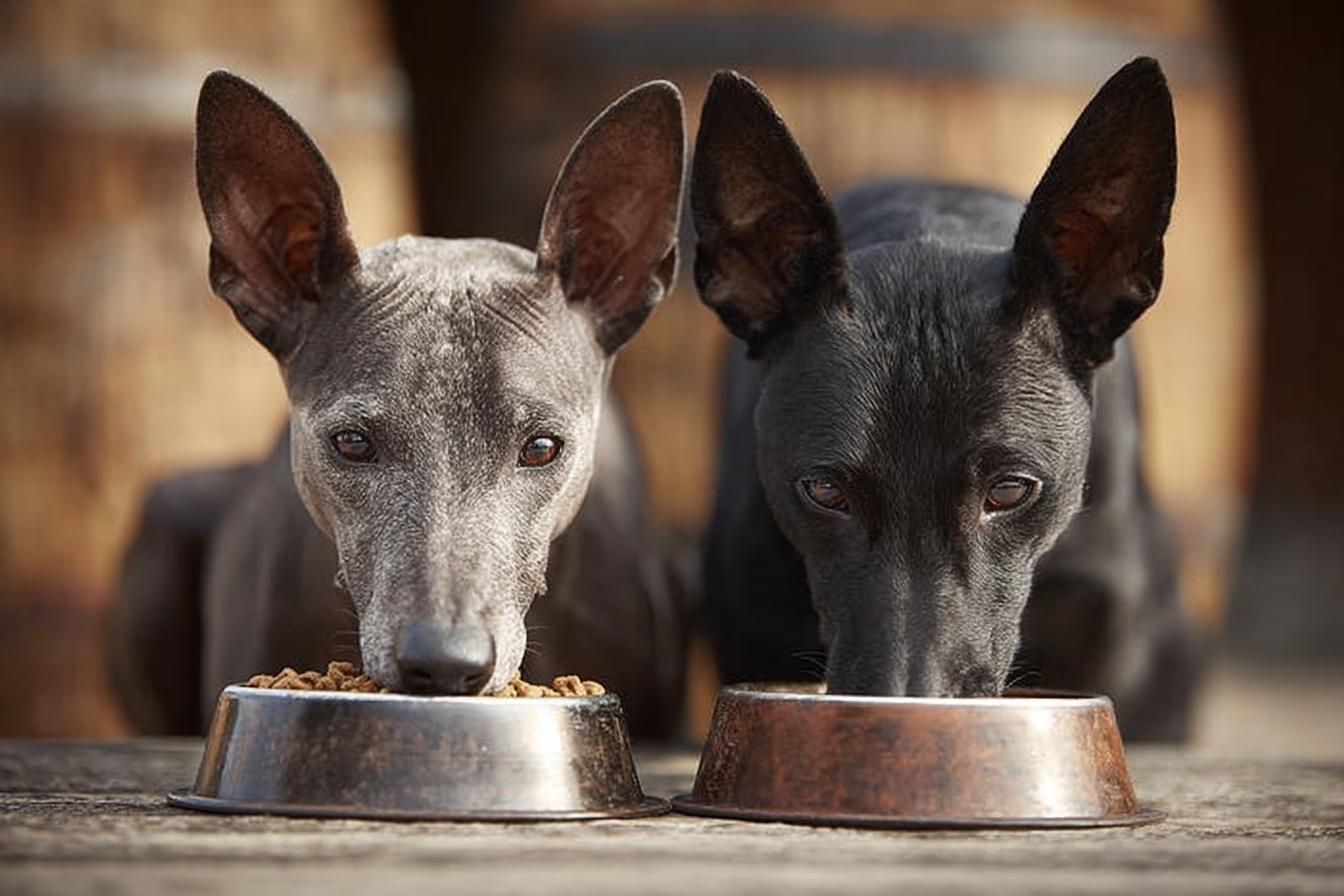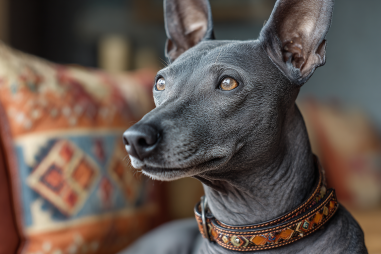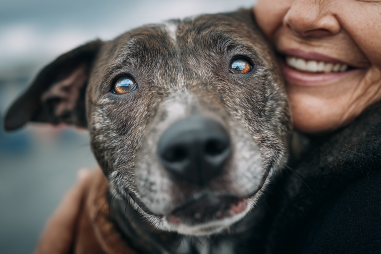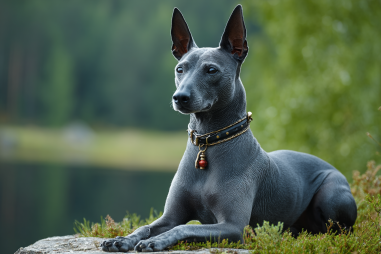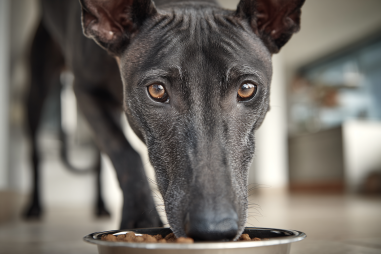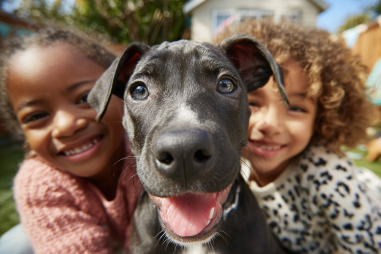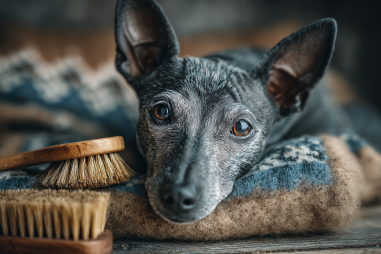The Xoloitzcuintli, often affectionately called the Xolo, is a remarkable breed with a rich history spanning thousands of years. One of its most striking features is that it comes in two distinct varieties: hairless and coated. These physical differences transcend mere appearance, influencing the dietary needs that are essential to the dog’s overall health, vitality, and well-being. Feeding a Xoloitzcuintli isn’t a one-size-fits-all situation; it requires thoughtful consideration of the variety to ensure the dog’s skin, coat, and general health thrive. In this article, we’ll explore how to tailor diets for both hairless and coated Xoloitzcuintli varieties, highlighting the crucial nutritional aspects that support their unique skin types, recommend beneficial vitamins and supplements, and offer practical feeding tips and sample diet plans. Additionally, we will discuss how to monitor dietary results and adjust feeding strategies as your Xolo grows or ages.
Differences Between Hairless and Coated Xoloitzcuintli Varieties
Understanding the basic differences between hairless and coated Xolos is foundational to addressing their nutritional needs effectively. The hairless variety, true to its name, has minimal to no hair covering its body, although some might have sparse tufts of hair on the head, tail, or feet. This exposes their skin directly to environmental factors like sun, wind, and cold. Their skin is the first line of defense against infection and irritation, making it especially vulnerable and in need of support through diet and skincare.
The coated Xolo, on the other hand, has a short, dense layer of hair that provides natural insulation and protection. This coat requires nutrients that promote healthy fur growth and maintain a glossy, resilient coat.
These inherent differences mean that while both varieties share some dietary requirements, their skin and coat health demands influence particular nutrients, supplements, and feeding habits.
Nutritional Needs Specific to Skin Type
Both hairless and coated Xolos need a balanced, high-quality diet rich in protein, fats, vitamins, and minerals to support their unique skin and coat conditions. However, some nutrients play more critical roles depending on the variety.
Hairless Xoloitzcuintli
Since hairless Xolos have exposed skin, they require nutrients that strengthen the skin barrier, speed up healing, and reduce sensitivity. Key nutritional focuses include:
- Essential Fatty Acids (Omega-3 and Omega-6): These help maintain skin hydration, reduce inflammation, and improve elasticity. Sources include fish oil, flaxseed oil, and chia seeds.
- Vitamin E: Acts as a potent antioxidant protecting the skin from damage caused by UV rays and environmental pollutants.
- Vitamin C: Assists in collagen production for skin repair and resilience.
- Zinc: Important for skin regeneration and immune function, preventing infections and sores.
- Biotin and B-complex Vitamins: Support overall skin health and prevent dryness.
Coated Xoloitzcuintli
The coated variety primarily benefits from nutrients that foster healthy hair growth and a vibrant coat, such as:
- Proteins: Hair growth relies heavily on amino acids, particularly cysteine and methionine.
- Fatty Acids: Omega-3s and Omega-6s also help maintain coat shine and reduce shedding.
- Vitamin A: Supports healthy skin cells and hair follicles.
- Iron and Copper: These trace minerals play roles in hair pigmentation and strength.
- Biotin: Vital for keratin production, which forms the structure of hair.
Vitamins and Supplements Recommendations
While a well-rounded diet typically covers most nutritional bases, supplements are often beneficial to optimize skin and coat health, especially for hairless Xolos experiencing skin sensitivity or coated Xolos needing a lustrous coat. Some recommended supplements include:
- Fish Oil Capsules: Rich in EPA and DHA, they provide potent anti-inflammatory benefits and promote skin hydration.
- Vitamin E Supplements: An additional boost can help in dry or damaged skin conditions.
- Collagen or Hydrolyzed Collagen: Supports skin elasticity and healing, especially relevant for hairless Xolos.
- Probiotics: Enhance gut health, which is closely linked to skin condition by reducing inflammation.
- Multivitamins for Dogs: To balance any nutritional gaps especially in home-cooked or restricted diets.
Always consult your veterinarian before starting supplements to ensure the dosage fits your Xolo’s specific health profile.
Feeding Tips for Skin and Coat Health
To maximize the benefits of your Xolo’s diet, consider these practical feeding tips tailored to each variety:
For Hairless Xolos
- Provide meals rich in omega fatty acids regularly to maintain skin moisture.
- Use high-quality proteins to promote tissue repair and immune function.
- Avoid foods with allergens that may trigger skin irritation such as grains or artificial additives.
- Incorporate fresh fruits and vegetables that are safe for dogs to supply antioxidants, which defend the skin against oxidative stress.
- Monitor water intake closely, as skin hydration also depends on adequate hydration.
For Coated Xolos
- Ensure a balanced protein intake for hair growth.
- Include fatty fish or fish oil supplements to add lustre and reduce shedding.
- Brush the coat regularly to distribute natural oils evenly.
- Feed nutritious snacks like carrots or sweet potatoes for extra vitamins and fiber.
- Minimize excessive bathing; when bathing, use gentle shampoos formulated for sensitive dog skin to avoid stripping oils.
Sample Diet Plans
Here are sample daily diet outlines to give you a practical starting point for each Xolo variety. Adjust portions according to your dog’s size, age, and activity level.
Hairless Xolo Daily Diet Sample
- Breakfast: High-quality wet or dry dog food rich in protein and omega fatty acids, supplemented with a teaspoon of fish oil.
- Midday Snack: Carrot sticks or apple slices (seeds removed).
- Dinner: Cooked lean chicken or turkey; steamed vegetables such as spinach and pumpkin; and a small portion of quinoa or sweet potato.
- Supplement: Dog-safe multivitamin or vitamin E capsule if recommended by your vet.
Coated Xolo Daily Diet Sample
- Breakfast: Dry kibble formulated for skin and coat health containing fish meal and flaxseed.
- Midday Snack: Small portions of blueberries or green beans.
- Dinner: Salmon or sardines (fresh or canned in water), brown rice, and steamed carrots.
- Supplement: Biotin supplement or fish oil capsule if advised.
Monitoring Dietary Effects
It’s important to track how your Xolo responds to their diet over time. Keep an eye on:
- Skin condition: Look for dryness, redness, flaking, or sores in hairless Xolos, and shine and shedding rates in coated Xolos.
- Energy levels: A healthy diet should support a lively and playful demeanor.
- Stool quality: Regular, well-formed stools indicate good digestion.
- Coat texture: For coated Xolos, the fur should feel soft and strong without excessive mats or shedding.
- Overall behavior and comfort: Persistent itching or discomfort may indicate food-related allergies or imbalances.
Regular vet check-ups are crucial, as professional evaluation can detect subtle signs of nutritional gaps or allergies early.
Adjusting Diet Based on Life Stage
Xolos, like all dogs, have evolving nutritional requirements throughout their lives. Puppies, adults, and senior dogs each demand different attention:
Puppies
Growth periods require higher protein and calorie intake to build muscle, bone, and healthy skin. Hairless puppies need particular care to protect their developing skin with adequate fatty acids and vitamins.
Adult Dogs
Adult Xolos benefit from maintenance diets balanced to sustain skin and coat health without excessive calories. Supplements become focused on prevention rather than growth support.
Seniors
Older dogs might need diets that support joint health and address skin changes like dryness or loss of coat luster. Antioxidants and fatty acids remain important, but calorie intake often needs to be reduced to prevent weight gain.
Adjusting the diet as your Xolo ages ensures they remain comfortable, radiant, and energetic throughout their life stages.
Feeding your Xoloitzcuintli a diet tailored to their hairless or coated variety is critical for maintaining their remarkable health, skin, and coat. Understanding their specific nutritional needs, incorporating beneficial supplements, and adjusting feeding plans throughout life stages will enable your Xolo to thrive. With care and attention to their diet, your Xolo will not only look magnificent but feel vibrant and full of life every day.

